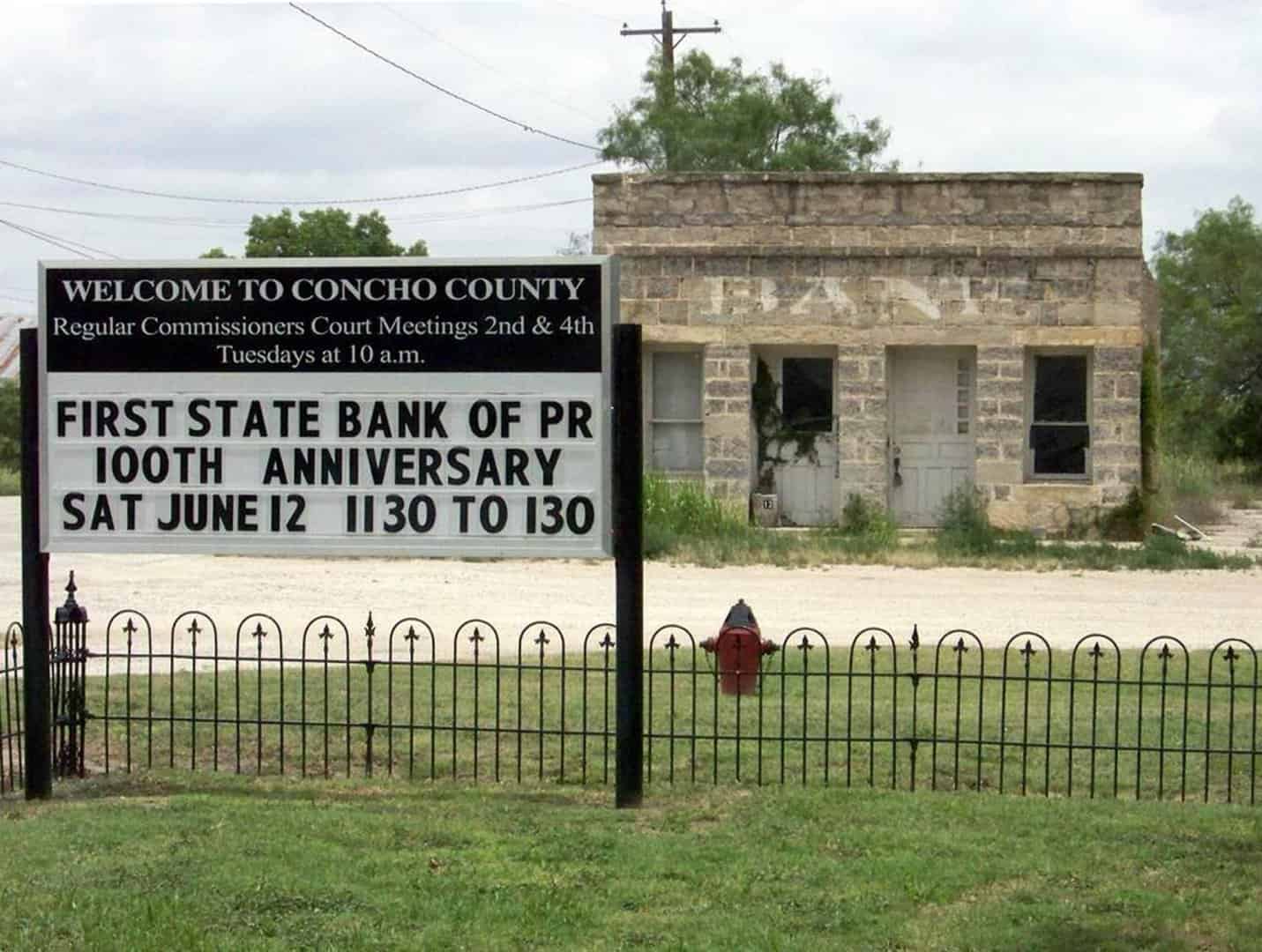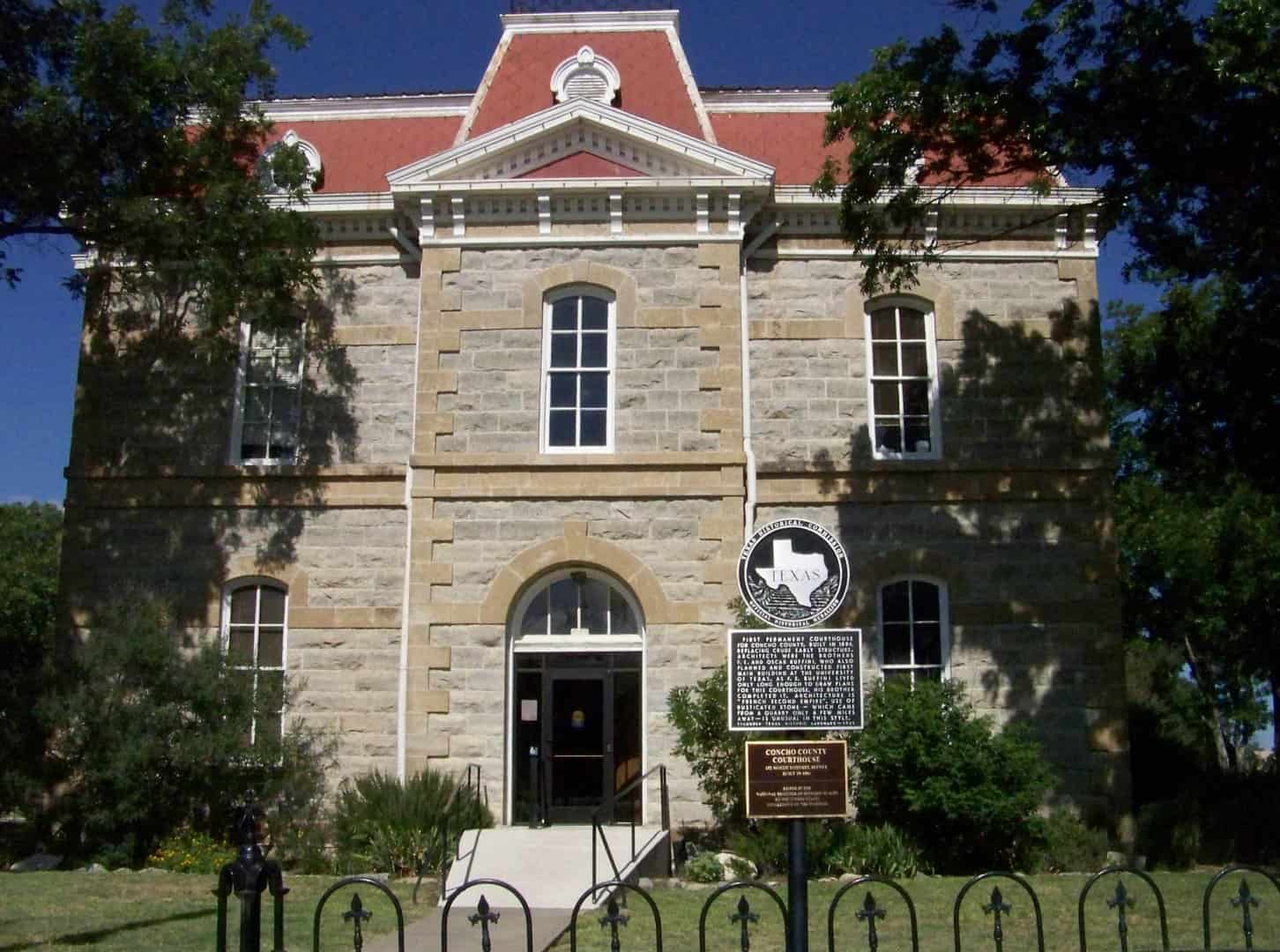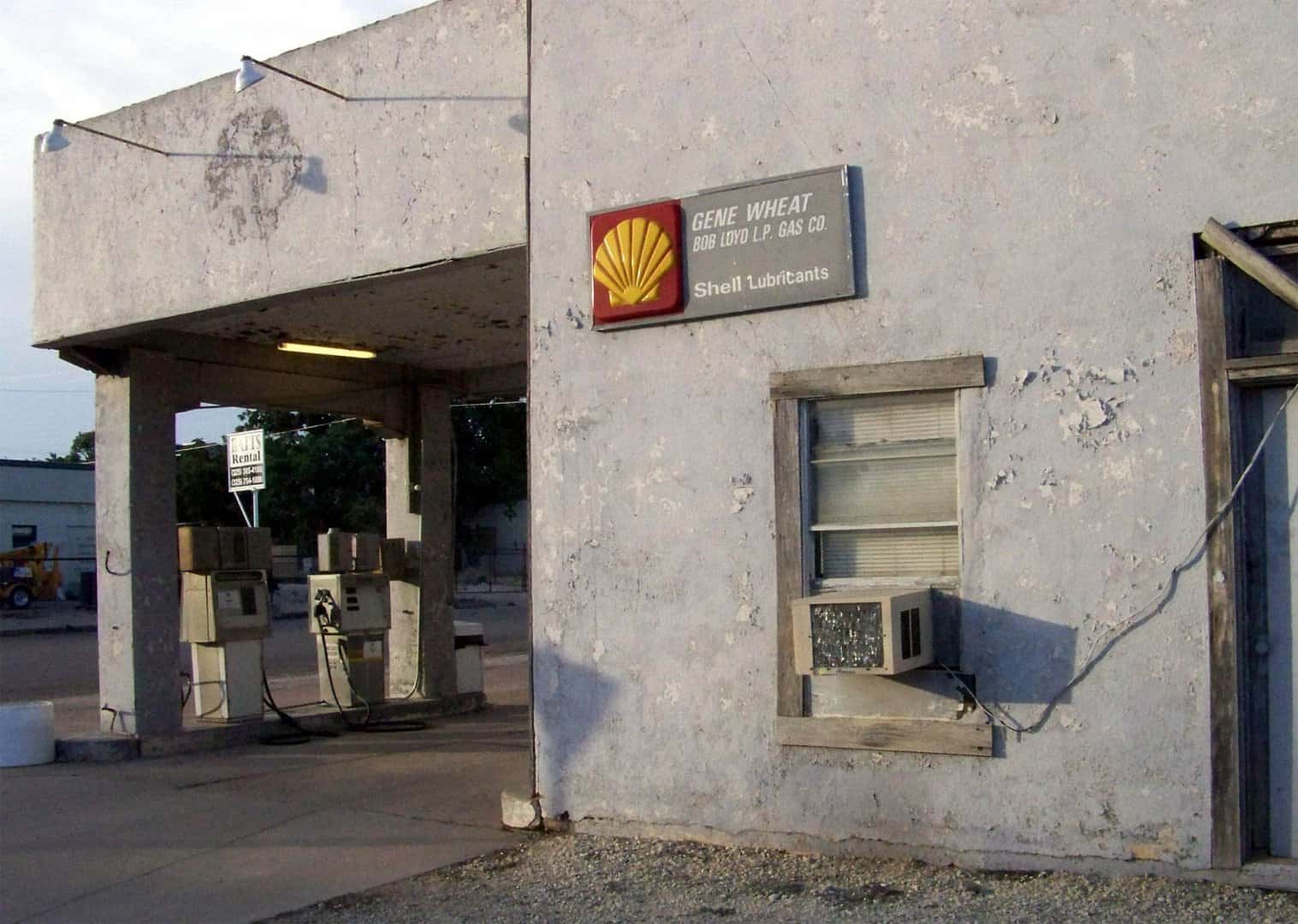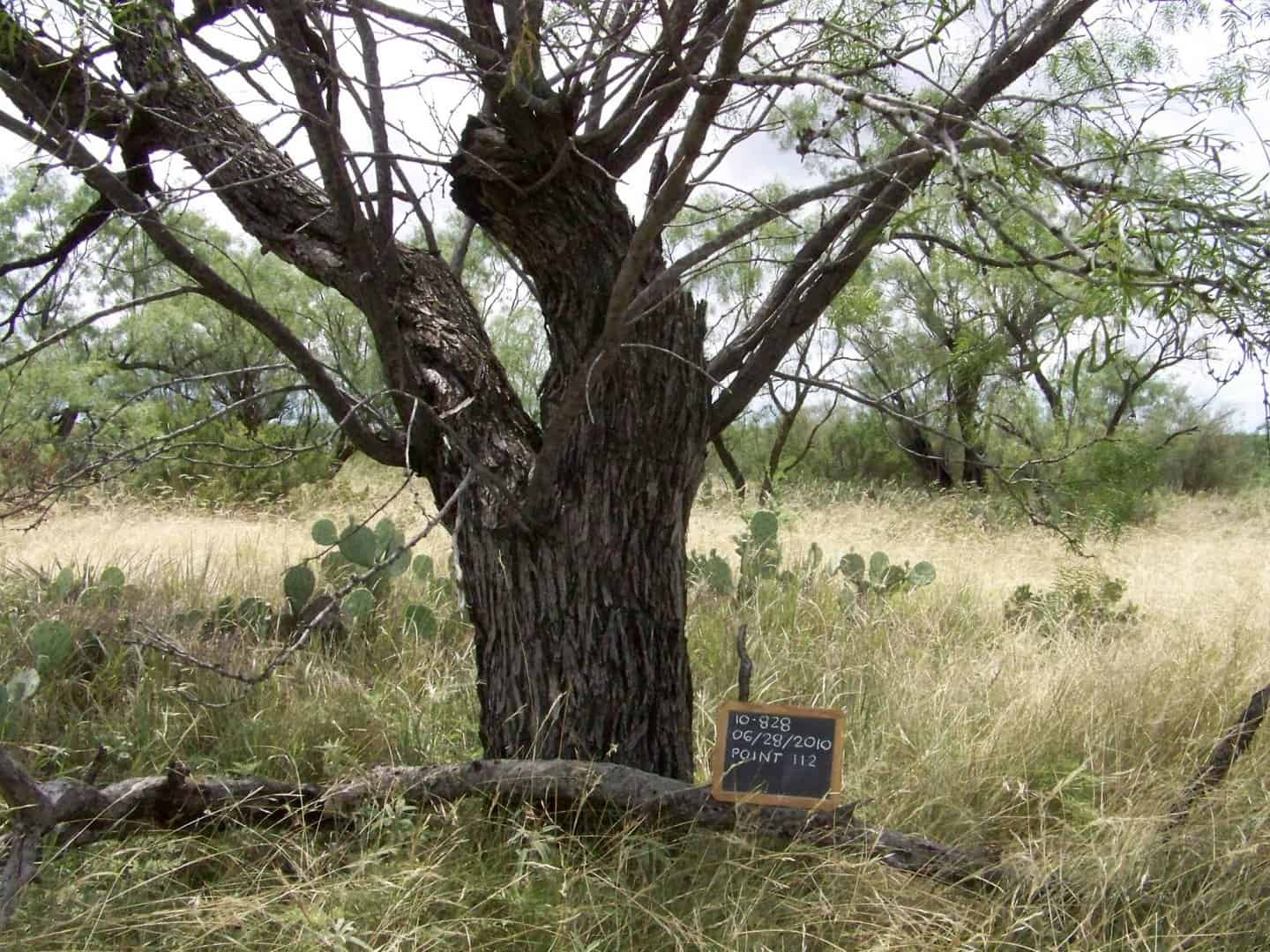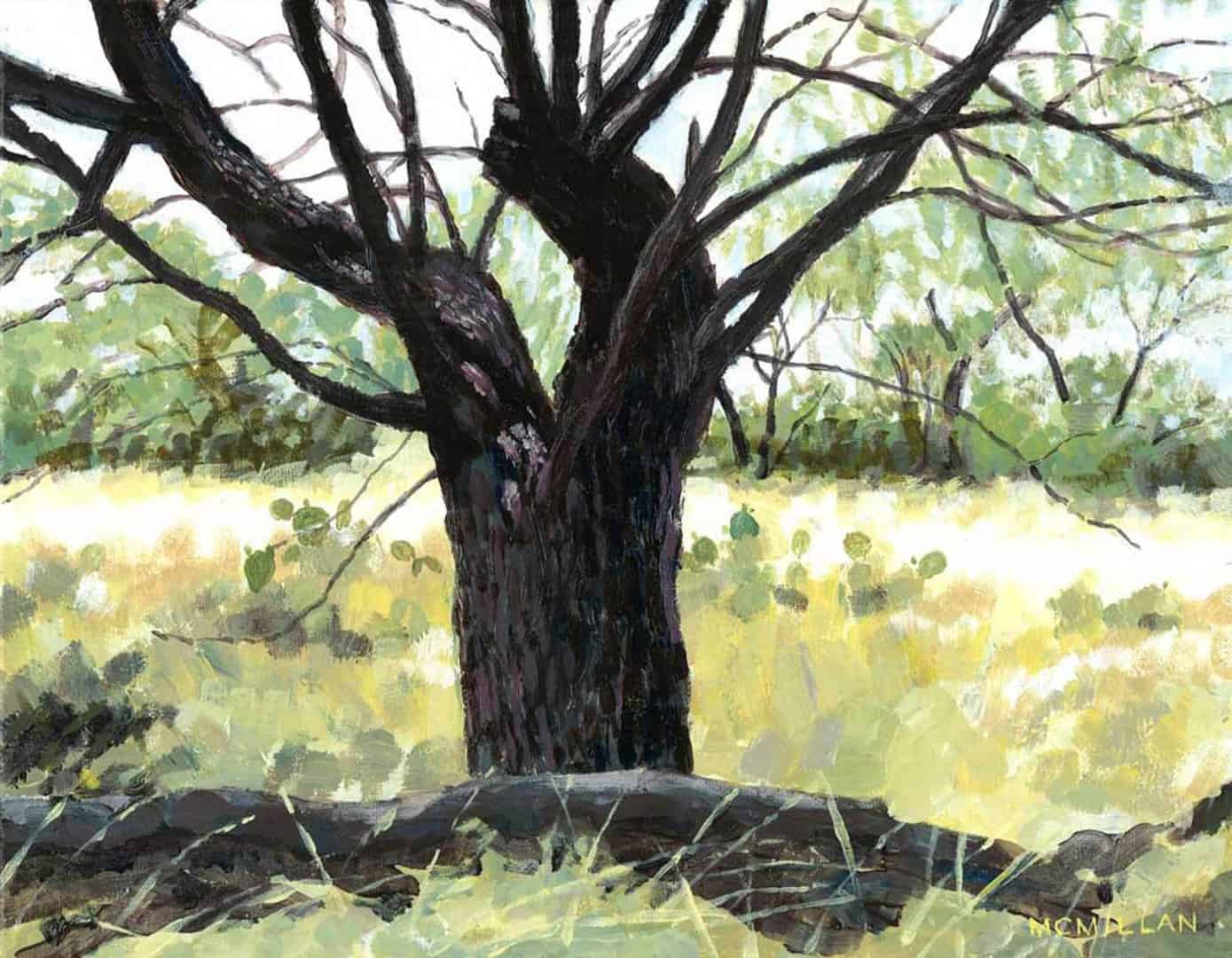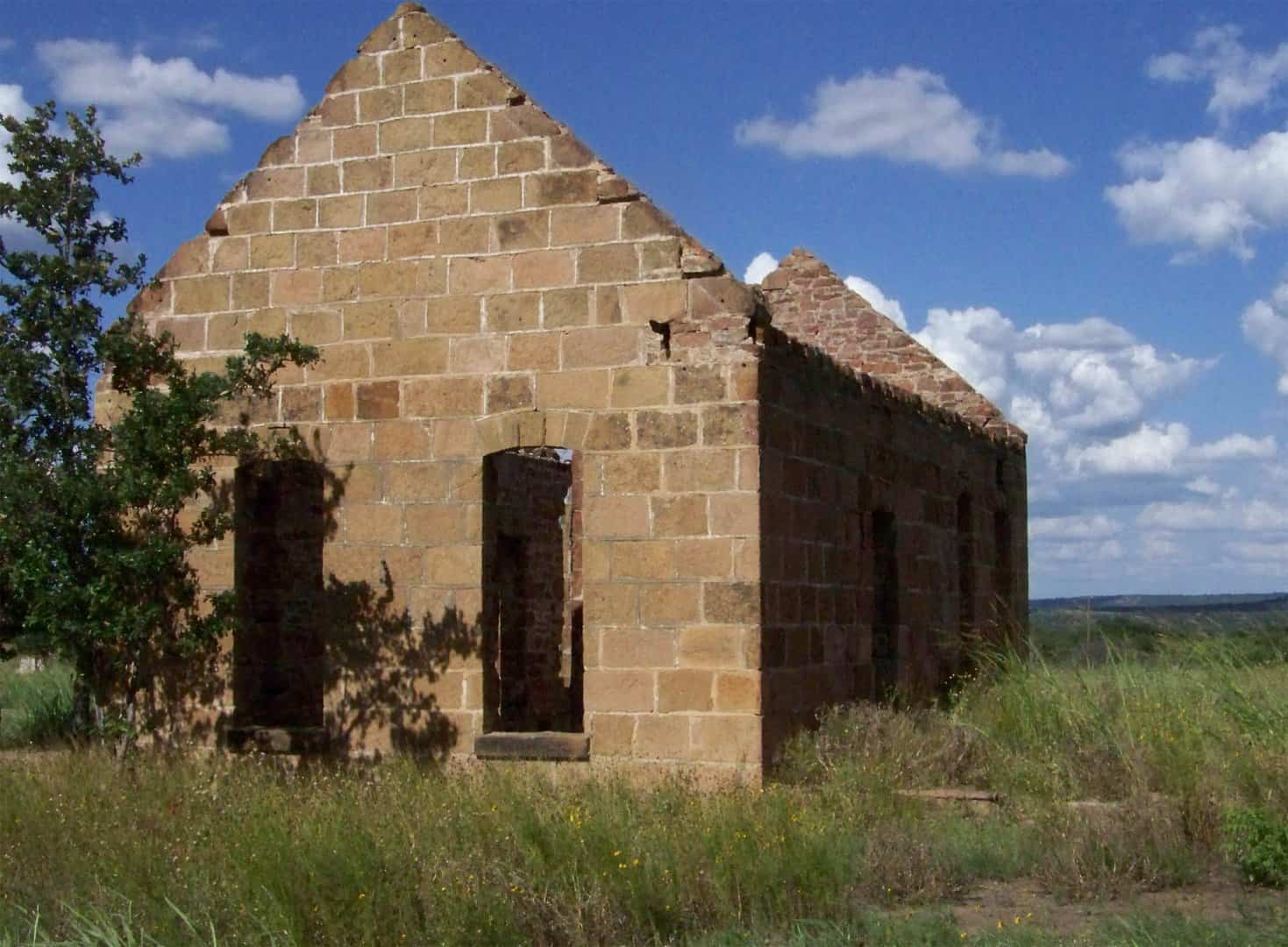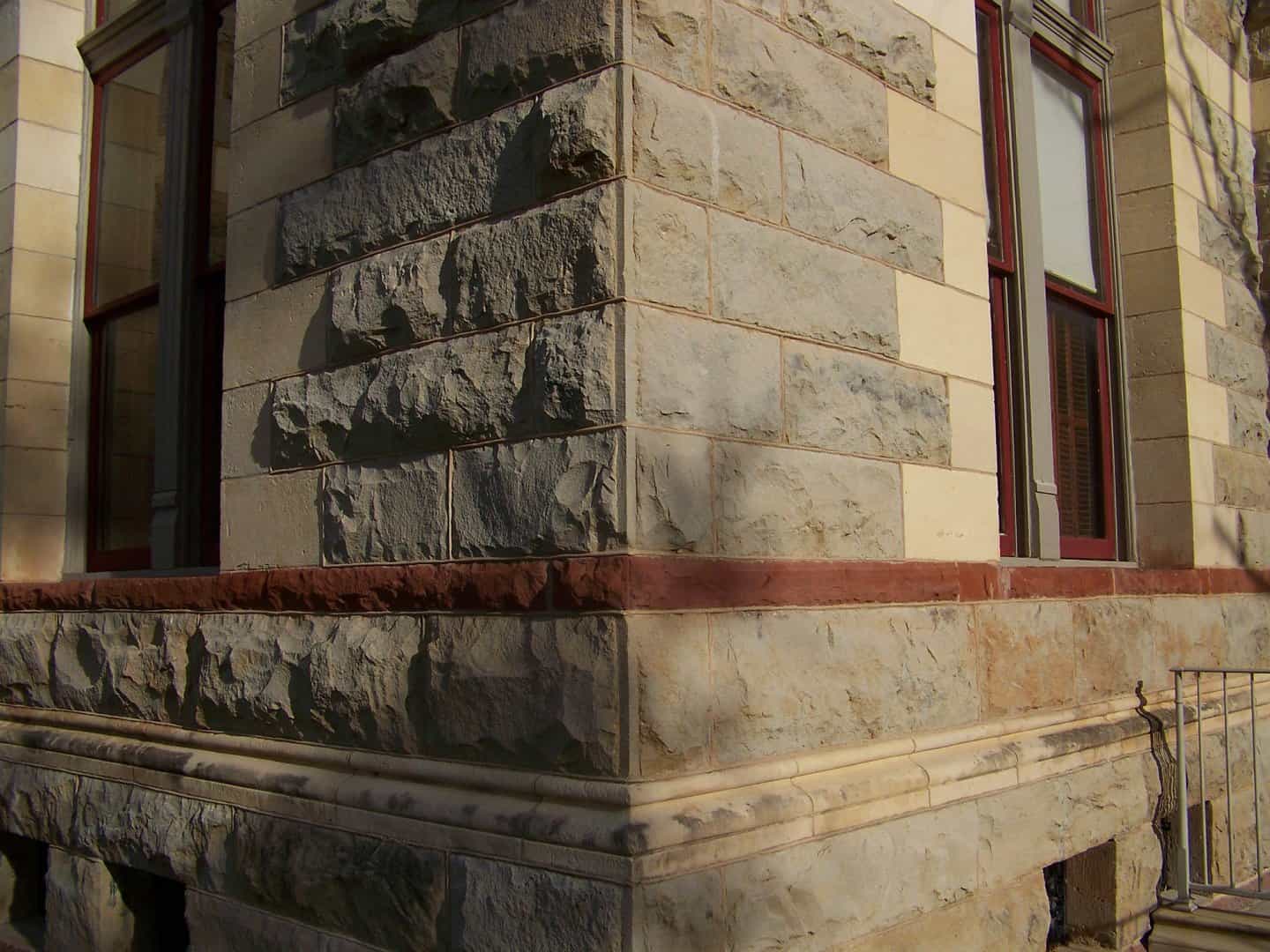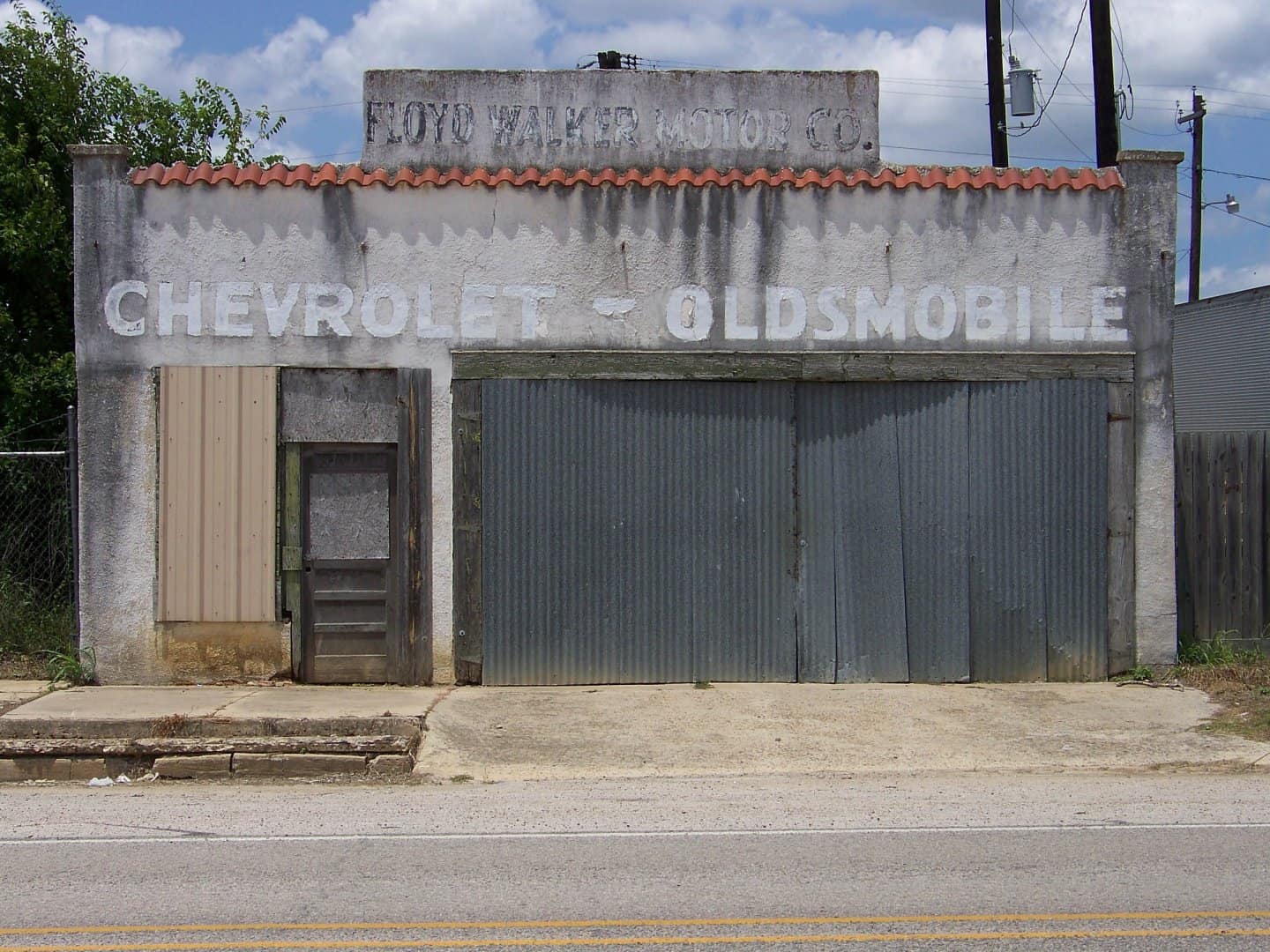Richard, post: 414316, member: 833 wrote: Sorry, couldn't help asking.
Do you have hamburgers and burritos with lead over your neck of the woods?
That's funny!
Actually the "leaded" 'burgers and burritos are illegally sold out of the back of the Mercado (grocery store) down the street..
paden cash, post: 414315, member: 20 wrote: Have you ever had one of those hambugers?
Paint Rock wasn't exactly overburdened with places to eat lunch. That joint was just down the street from the courthouse at lunchtime on a couple of days when I was doing research in the County Clerk's Office. I don't recall much about the hambugers, but they didn't kill me.
In Concho County, the Clerk and her deputies closed up the office for the lunch hour. Since it took about fifteen minutes to eat whatever it was that I had at the gas station, that left plenty of time to kill that I usually spent taking photos of the town. Here's the East elevation of the courthouse (taken later in the afternoon).
[USER=833]@Richard[/USER]
rotflmsao
The area that I was researching was land that was originally surveyed by J.J. Giddings in about 1847 or 1848. I could cheat and look at my file to see which, but either way it was a very early date for that locality smack dab in the middle of Comanche territory. The Republic and State of Texas had the idea that settling large numbers of immigrants well out on the frontier would act as a buffer against Comanche raids, but I don't think that the Texans envisioned that the German Company that would actually bring immigrants from Europe would find it prudent to just enter into a treaty with the Comanches to allow the surveying and settlement of lands within their possession, with the German settlers giving the Indians free passage to other raiding prospects in the East.
Paint Rock in Concho County was an interesting place to spend a few hours taking photos on different days, but Ballinger up the road in Runnels County was much more photogenic. Even the gas stations had a definite Edward Hopper quality in the early evening light after supper.
One of the interesting features of the surveys that J.J. Giddings and his surveying parties made in what I saw of Concho County is it appears that they were almost uniformly running about 1950 varas to a mile, an excess of slightly more than 49 varas (about 136 ft.) per mile. So later surveyors who found some original corner and ran for several miles marking corners at the record distance of 1900 varas per mile as reported by Giddings ended up hundreds of feet away from where his parties had actually marked the corner sought.
This is one of the bearing trees that J.J. Giddings & Party marked in 1847, a mesquite that has seen it all. This particular photo is probably pretty close to how the land looked when the surveyors arrived in the 1840s. Some pastures had been more recently bulldozed and/or root plowed. but this one was relatively intact with plenty of large-caliper mesquites like a time capsule waiting to be opened.
I liked the scene well enough to put it on canvas:
Kent McMillan, post: 414329, member: 3 wrote: The area that I was researching was land that was originally surveyed by J.J. Giddings in about 1847 or 1848. I could cheat and look at my file to see which, but either way it was a very early date for that locality smack dab in the middle of Comanche territory. The Republic and State of Texas had the idea that settling large numbers of immigrants well out on the frontier would act as a buffer against Comanche raids, but I don't think that the Texans envisioned that the German Company that would actually bring immigrants from Europe would find it prudent to just enter into a treaty with the Comanches to allow the surveying and settlement of lands within their possession, with the German settlers giving the Indians free passage to other raiding prospects in the East.
You left out the part where those Germans built their houses with foot-thick rock walls. They weren't no dummies anyways.
flyin solo, post: 414363, member: 8089 wrote: You left out the part where those Germans built their houses with foot-thick rock walls. They weren't no dummies anyways.
About all they had to work with in Concho County would have been rock. The first structures that the settlers built probably had paling walls of mesquite chinked with adobe or wattle and daub. By default, stone was just about the only other building material since aside from the mesquites there was no timber. The Germans did bring some serious craft expertise in building, though. They weren't like the yokels from Tennessee whose idea of civilization was a road of mud lined by log cabins.
Holy Cow, post: 413931, member: 50 wrote: "Old Goat House"
And all this time I thought he lived in Altamonte Springs. Learn something new every day around this place.
Ahem, that happens to be my winter vacation home. Besides I'd rather be an "Old Goat" than an "Old Fool". 😉
@Kent, did you have the chance to make it down to the painted rocks at paint rock?
[USER=3]@Kent McMillan[/USER] [USER=11913]@Monte[/USER]
The pictures are great. I never realized the diversity of architectural structures in Texas. I have always been under the impression all the structures were of Spanish influence. :smarty:
FL/GA PLS., post: 414391, member: 379 wrote: [USER=3]@Kent McMillan[/USER] [USER=11913]@Monte[/USER]
The pictures are great. I never realized the diversity of architectural structures in Texas. I have always been under the impression all the structures were of Spanish influence. :smarty:
Thanks,and actually, yes the state is very diverse, Spanish influence may be just blocks from a strong German or Czech influence, I personally have just gotten into taking pictures in the last few years. We have whole parts of Texas that were settled by immigration grants from European countries, which of course styled the houses, the food, the crops, etc. The state also has several ranges of terrain, going from desert in the southwest, to prairie, to hills, to forrest and swamps. The cowboy movies that show all of Texas as a desert did the state a disservice.
whereas the vast majority of structures built in texas over the past few decades would be right at home in hartford or alexandria...
Monte, post: 414389, member: 11913 wrote: @Kent, did you have the chance to make it down to the painted rocks at paint rock?
No, the work schedule didn't have time for that. It's supposed to be a fairly spectacular gallery of Indian pictographs, though. It's on the list of sights yet to see.
I see in most of my photos a preoccupation with how the space within the frame is divided. This is a corner of the Fayette County Courthouse in La Grange that I ended up shooting after giving up on being able to get an interesting photo of the whole building in the available light. I suppose it's more of a statement of abstract aspiration.
The whole fascination with how the picture space is divided by the elements within it means that even cell towers get photographed.
And this garage alongside Old US Hwy 90 in Waelder, Texas.
Kent McMillan, post: 414533, member: 3 wrote: I see in most of my photos a preoccupation with how the space within the frame is divided. This is a corner of the Fayette County Courthouse in La Grange that I ended up shooting after giving up on being able to get an interesting photo of the whole building in the available light. I suppose it's more of a statement of abstract aspiration.
so back around '08-'10 or so, when the bottom had dropped out and i trudged into my miserable office gig every day, compelled by an employer to bill 36+ hours a week, despite neither needing to nor having the workload to support doing so, i'd often take long walks around downtown with my camera. i gravitated towards parking garages, as they reliably afforded easy access to good perpectives. here and there i could finagle my way onto rooftops, either using the very real justification of being the surveyor of the property or else just wiggling door handles in the same way my dad used to fish for jackpots in payphone change return doors.
needless to say (but i'll still say it), unless you're shooting fisheye focal length, abstract is your likely medium when shooting downtown urban architecture.








